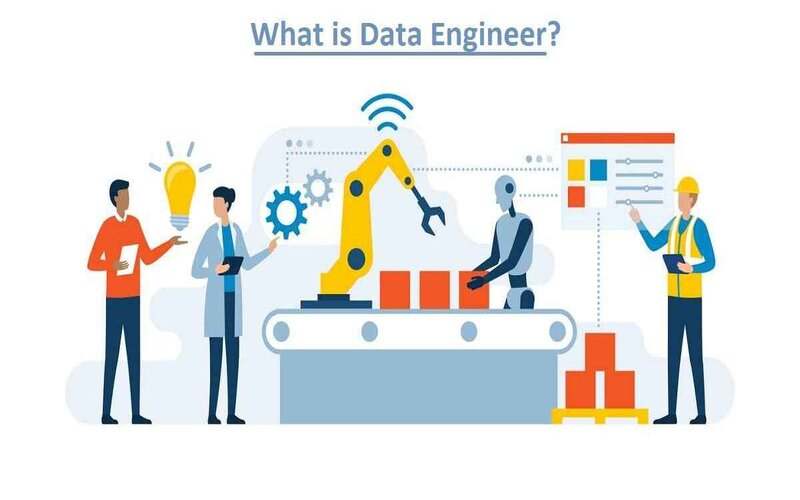Data engineering provides efficient IT infrastructure to allow analysts, scientists, and strategists to conduct complex statistical modelling activities. A data engineer is responsible for securing your digital communications and facilitating pipeline stability and data integrity. This post will elaborate on such data engineering responsibilities.
What is Data Engineering?
Data engineering means specifying, developing, deploying, updating, and protecting enterprise computing systems to offer robust data gathering and analysis facilities. Organisations implement data engineering solutions to optimise the costs and benefit from outsourcing.
If data analysts request databases in a standardised format, data engineering consulting teams can reformat and cleanse the raw data to meet the analytics requirements. Therefore, you can minimise conflicts, save the analysts’ time, and make the insight extraction more consistent.
After all, unprocessed raw data often contains both structured and unstructured data. Such an unpredictable combination of mixed datasets increases the challenges in conducting the extract, transform, and load (ETL) operations.
However, data engineering solutions can eliminate data quality problems before sharing the databases with analysts and data scientists. Some professionals will also guide you in creating automated workflows to enhance the data management efficiency at your organisation.
What Are the Responsibilities of Data Engineering Professionals?
1| Handling Raw Data
Raw data is unprocessed, i.e., you collect it from the data source, but it is yet to transform into a more structured form that satisfies company standards. Since big data analytics services have witnessed a rise in adoption by corporate stakeholders, data engineering consulting firms must build extensive data storage ecosystems.
A data engineer often manages petabytes of corporate data. So, using the latest hardware is vital to accelerate the speed of operations. Otherwise, data collection inconsistencies and storage delays can cause technical challenges such as unsuitable distribution of computing power or data corruption.
For example, sourcing text data requires less power than collecting unstructured data like images, audio clips, and videos from social media platforms. Moreover, data engineering solutions must always retain a copy of unprocessed data for auditing and archiving purposes.
2| Data Quality Enhancement
Each corporation needs to do more than amass a large volume of data to increase its business intelligence (BI) and improve strategies. So, it asks data analysts to extract patterns from the datasets describing consumer behaviours, industry trends, policy risks, and supplier relations.
However, data science, analytics, and advanced visualisations can mislead you if data quality assurance is absent. Therefore, addressing and rectifying the data quality issues are two essential responsibilities of data engineering consulting partners.
Data engineers can leverage machine learning (ML) to resolve database gaps. Issues like duplicate entries and obsolete records must also receive appropriate optimisation. There is always a need for a holistic response strategy to mitigate data quality risks.
3| Aligning IT Ecosystem with Business Requirements
Extracting the most relevant insights is possible if data engineering solutions successfully modify an enterprise’s data processing activities with an outcome-oriented mindset. For example, each department will have distinct data requirements. So, the employees in different departments will use the computing resources according to their immediate priorities.
Simultaneously, analysts and scientists use data analytics services to find insights that assist organisations in surpassing their competitors for a long time. This situation demands that data engineering consulting teams adjust their IT configuration to match departmental requirements.
Moreover, some business units will request those datasets comply with a specific format to make reporting more efficient. Since a data engineer works with different business departments, managing several data formats becomes stressful. Still, data engineering responsibilities comprise maintaining multiple reporting formats determined by business requirements.
4| Building Algorithms, Prototypes, and Application Programming Interfaces (APIs)
Data management is a team effort, and multidisciplinary collaboration is a must. Therefore, an application programming interface (API) allows different professionals to leverage existing IT infrastructure across numerous software tools.
An API call means that the native application sends a request to another software to provide the functionality that it lacks. So, data engineering solutions fulfil the responsibilities encompassing writing the code necessary for prototyping and API development.
Prototypes allow data engineers to test and demonstrate the capabilities of an application. Later, the stakeholders can offer inputs to customise the API prototypes from a cybersecurity point of view. Extensive debugging will also become more manageable because prototypes belong to an isolated environment, keeping the core operations immune to the programming revisions in each API.
Conclusion
Data engineers build systems that empower businesses to benefit from modern data management, analytics, and reporting visualisation operations. Besides, data engineering consulting firms let you reduce the cost of ETL activities by eliminating irrelevant data that increases storage liabilities.
Remember, data relevance, integrity, and security services are crucial if a company wants to employ high-quality data analytics to create impactful growth strategies. Therefore, business leaders must reach out to the best data engineers with a documented record of building stable data pipelines.
A leader in data engineering solutions, SG Analytics, supports organisations wanting to rationalise their data lifecycle management, business intelligence, and predictive modelling. Contact us for unparalleled scalability across your insight extraction and performance reporting operations.





